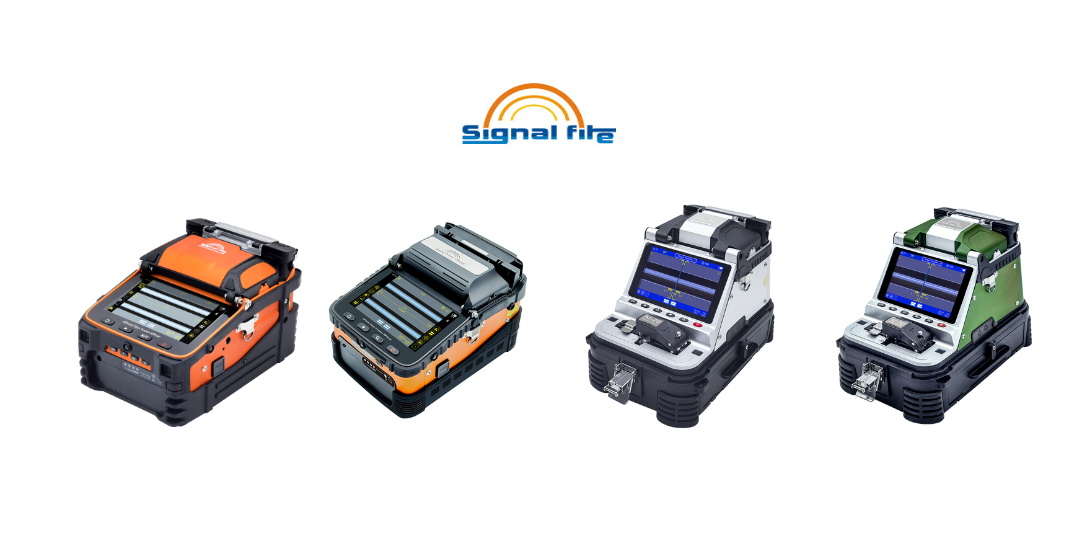Optical Fiber Splicing with Signal Fire Devices – The Complete Guide to Precise and Durable Connections
Optical fiber splicing is the foundation of every modern fiber optic infrastructure – from FTTH connections to high-capacity networks. It is a precise process in which two glass fibers are fused together using an electric arc to create a perfectly aligned joint.
For high-quality splicing, the choice of proper equipment is crucial – and this is where Signal Fire fusion splicers stand out, combining precision, robust construction, and smart technology for professional fiber technicians.
Basic Structure of an Optical Cable
An optical cable consists of several protective layers that ensure signal stability and safety:
- Core – carries the light signal.
- Cladding – reflects light back into the core.
- Buffer coating – protects the fiber from moisture and mechanical damage.
- Aramid yarns (Kevlar) – provide mechanical protection against tension.
- Outer jacket – resistant to UV and environmental impacts.
For precise fiber processing, Signal Fire AI-9, AI-20, and AI-30 splicers are ideal, offering automatic fiber alignment and intelligent process control.
Drop Cables and Transition to Installation Cable
Drop cables connect the main optical line to the subscriber’s house. They are thinner, flexible, and usually contain 1 to 4 fibers. At the transition point, fibers are spliced to the installation (indoor) cable.
This is where splicing precision matters – Signal Fire devices offer:
- Automatic fiber alignment (core alignment)
- 3-second splicing time
- Real-time splice loss testing
- Bluetooth connection with a mobile app

Aerial vs Underground Optical Cable
When building FTTH or PON networks, two main types of cables are used: aerial and underground optical cables. Each has its own advantages and limitations:
| Feature | Aerial Cable (4-core) | Underground Cable (4-core) |
|---|---|---|
| Application | Mounted on poles or building facades | Installed in ducts or underground |
| Support Element | Steel or FRP wire | Usually none |
| Resistance | UV, wind, snow, temperature | Moisture, pressure, rodents |
| Advantages | Cheaper installation, easy maintenance | Long-term protection, fewer damages |
| Disadvantages | Exposed to weather and mechanical stress | More expensive and complex installation |
Aerial Cable Composition:
- 4 fibers in a microtube
- Kevlar or steel support wire
- UV-resistant outer jacket
Underground Cable Composition:
- 4 fibers in a gel-filled tube
- Aramid reinforcement
- Thick PE jacket with reinforcements
Why Choose Signal Fire Fusion Splicers?
- Automatic fiber alignment (core alignment)
- Fast splicing – in just 3 seconds
- Battery life up to 240 splices per charge
- Smart mobile app for monitoring and statistics
- Compact and rugged design – ideal for field work
Signal Fire devices are designed for professional fiber optic installers who need a reliable, fast, and precise solution for fiber splicing.
Conclusion
Whether you’re building an FTTH network, maintaining city infrastructure, or performing home installations, splice quality is crucial. With Signal Fire devices, you’ll achieve perfect joints, minimal losses, and maximum work efficiency.
Choose reliable equipment and ensure your fiber optic system operates flawlessly – today and in the future.
Keywords: optical fiber splicing, Signal Fire fusion splicer, fiber optic cables, fiber splicer, FTTH connection, fiber optics Slovenia.
